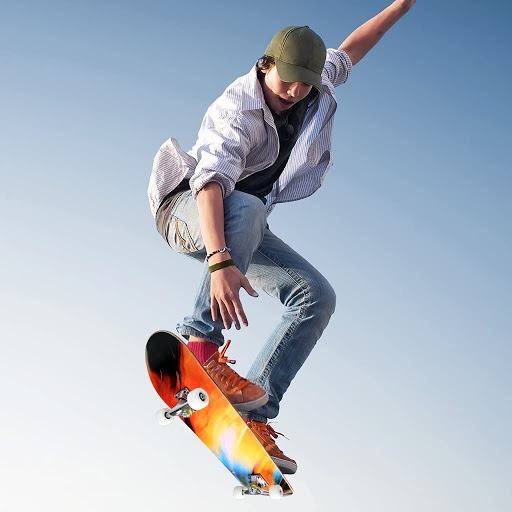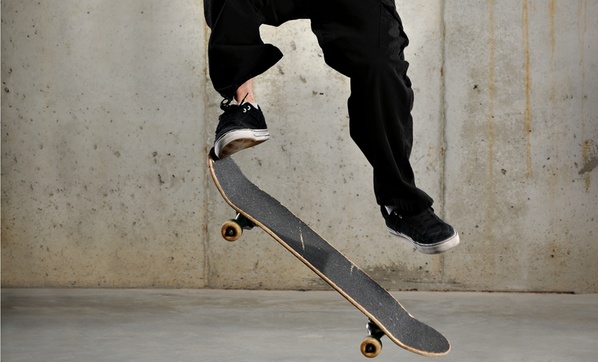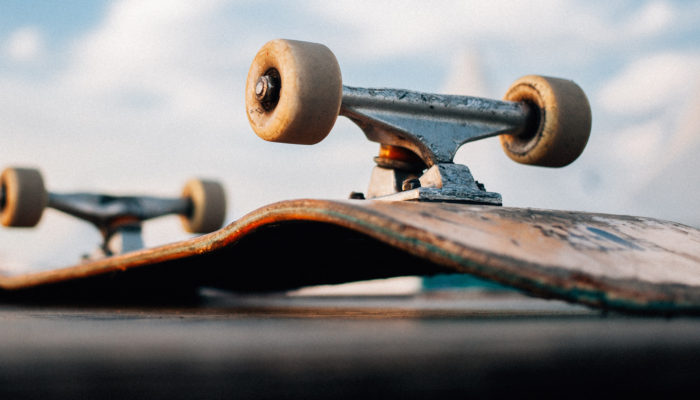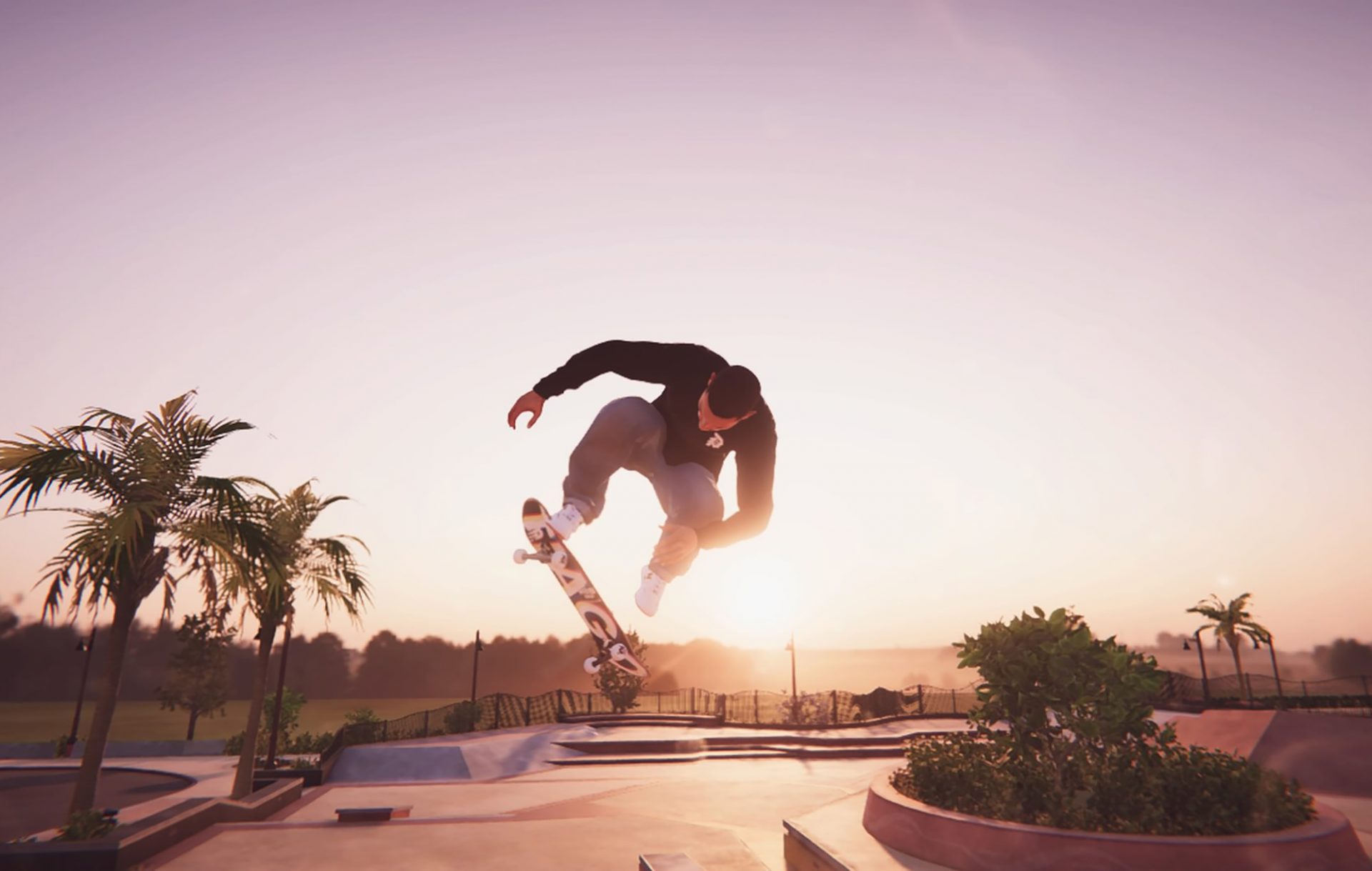Skateboarding is an exhilarating and dynamic sport, but it’s also important to prioritize safety to ensure a positive experience for riders of all levels. Also, while talking about safety, it’s necessary to visit a pediatric dentist in Fayetteville NC if you ever hurt your teeth by falling. In this comprehensive guide, we’ll explore the essential skateboarding gear that every enthusiast should use and how to use it effectively. By following these guidelines, you can minimize the risk of injury and fully enjoy the world of skateboarding. Whether you’re a seasoned skateboarder or just starting out, having the right gear, including durable veteran clothing, can make all the difference in your skating experience.
Protect Your Head: The Importance of Helmets

The first and most crucial piece of safety gear for any skateboarder is a helmet. Head injuries can have severe consequences, so protecting your skull should always be your top priority.
A Proper Fit is Key: When choosing a helmet, custom packaging is crucial to ensure it fits snugly on your head without being too tight. It should sit level on your head, covering your forehead and the back of your skull. The chin strap should be adjusted so that it fits securely under your chin, preventing the helmet from moving during a fall.
Certified Helmets: Ensure that your helmet is certified by an accredited safety organization. Look for labels from organizations like the Consumer Product Safety Commission (CPSC) or the European Committee for Standardization (CE). These certifications guarantee that the helmet meets the required safety standards.
Replace After Impact: If your helmet sustains a significant impact, replace it immediately. Helmets are designed to absorb a single impact, and they may not provide the same level of protection after a fall. It’s essential to inspect your helmet regularly for signs of damage, even if it hasn’t been involved in a crash.
You can find some cheaper helmets at the free shop while waiting for your car at the rent a car Sarajevo Airport!
Protect Your Limbs: Knee and Elbow Pads
In skateboarding, falling is a part of the learning process. To protect your knees and elbows from abrasions and more severe injuries, invest in knee and elbow pads.
Skateboarding is an exhilarating sport, but it’s essential to stay safe and avoid injuries that might require IV therapy to recover.
Proper Fit: Knee and elbow pads should fit comfortably without restricting your movements. They should stay in place and not slide down during skateboarding sessions. Adjustable straps can help you achieve a secure fit.
Impact Absorption: Look for pads with high-density foam or gel inserts for effective impact absorption. These materials can minimize the force of a fall, reducing the risk of fractures or sprains.
Wear Them Consistently: Don’t skip wearing your knee and elbow pads, even if you’re just practicing basic skills. Many skateboarding injuries occur during seemingly routine maneuvers, so it’s essential to have protection on at all times.
You can learn more about how to use these in one of the tutorial videos made at the video production company in Philadelphia!
Protect Your Hands: Skateboard Gloves
Your hands are often the first point of contact with the ground during a fall. Skateboard gloves, with built-in palm sliders, can help protect your hands from abrasions and fractures.
Full-Fingered Gloves: Choose gloves with full fingers to safeguard your entire hand. These gloves are designed to minimize friction when your hands come into contact with the ground, reducing the risk of road rash.
Palm Sliders: Palm sliders are essential for skateboard gloves. These hard, plastic pucks are strategically placed on the palms to reduce friction and absorb impact, preventing hand injuries.
Secure Closure: Make sure the gloves have a secure closure system, such as a hook-and-loop strap or a buckle, to keep them in place during a fall. Ill-fitting or loose gloves can impede your performance.
If you want to bring your skateboarding gear to the holiday with you, make sure to also book one of the premium vacation rentals! So you’d have extra space to place them and lots of places around where you can skate!
Protect Your Body: Padded Shorts and Body Armor
For added protection, consider wearing padded shorts and body armor. These gear items can safeguard your hips, tailbone, and chest in case of a fall.
Padded Shorts: Padded shorts have foam or gel padding on the hips and tailbone area. This extra cushioning can prevent painful bruises and fractures during hard landings.
Body Armor: Body armor typically protects the chest, back, shoulders, and sometimes the elbows. It provides an extra layer of safety for skateboarders who perform high-risk tricks and stunts.
Layering*: It’s essential to ensure that your padded shorts and body armor fit comfortably under your skateboarding attire. They should not restrict your movements or cause discomfort.
Footwear Matters: Skateboarding Shoes
Selecting the right tapestries for your skateboard deck is akin to choosing the perfect canvas for an artist. Just as a painter needs the ideal surface to create a masterpiece, a skateboarder relies on grippy, flat-soled shoes to craft their moves on the board. This canvas of choice ensures that every kick, flip, and slide is not just a motion but a work of art in motion.
Reinforced Ollie Area: Look for shoes with reinforced Ollie areas, typically in double or triple stitching. This reinforcement prevents quick wear and tear during tricks.
Ankle Support*: While skateboarding shoes are designed for flexibility, they should also provide some ankle support to prevent sprains and injuries.
Did you know that it’s recommended to do skating as an extra activity besides using the service for medical weight loss in Nolensville TN?
Maintain Your Skateboard: Regular Inspections
In addition to personal protective gear, skateboard maintenance is crucial for safety. Regularly inspect your skateboard to ensure it’s in good working condition.
Check the Trucks*: The trucks should be securely attached to the deck, and the bushings should be tightened to your preference. Loose or damaged trucks can lead to instability and accidents.
Wheels and Bearings*: Inspect the wheels for signs of wear and tear. Check the bearings for proper lubrication. Smooth-rolling wheels and well-maintained bearings are essential for control and stability.
Deck Condition*: Examine the deck for cracks, delamination, or warping. A damaged deck can break or cause accidents during use.
Whenever you have some contractors in your house, like the ones for custom bathroom remodeling in Westchester, it’s the best time to take a break and go out to skate!
Protect Your Eyes: Sunglasses
While sunglasses are not typically seen as traditional safety gear, they can be essential for protecting your eyes from debris, UV rays, and glare.
Eye Protection: Sunglasses shield your eyes from wind, dust, and debris that can cause discomfort or injury. They also offer protection from harmful UV rays, which can be particularly important during long skateboarding sessions in sunny conditions.
Clear Vision: Choosing sunglasses with polarized or anti-reflective lenses can improve visibility by reducing glare from shiny surfaces like pavement or water.
Secure Fit*: Make sure your sunglasses have a secure fit so they stay on your face during tricks and rides. Look for models with rubberized nose pads and temple tips for extra grip.
Learn Proper Falling Techniques

While wearing protective gear is essential, it’s also crucial to learn how to fall safely, even when indulging in fun activities like ice cream cone edibles. Falling is a part of skateboarding, and knowing how to minimize the impact of a fall can greatly reduce the risk of injury.
Tuck and Roll: When you sense you’re about to fall, try to roll with the fall instead of resisting it. Tucking your limbs in and rolling can help disperse the impact, reducing the chances of injury.
Use Your Pads: While falling, try to land on the areas protected by your pads. For example, if you’re wearing knee pads, try to land on your knees rather than your hands or face.
Don’t Extend Your Limbs: Avoid extending your arms or legs fully when you fall. Keeping your limbs relaxed can prevent hyperextension or fractures.
Practice and Progress
In addition to safety gear and falling techniques, it’s essential to practice and progress in a controlled and safe manner. Start with the basics and gradually work your way up to more advanced tricks as your skills improve.
Start in a Controlled Environment: Begin your skateboarding journey in a skate park or another controlled environment where you can build confidence and skills in a safe setting.
Learn from Experienced Skateboarders: Seek guidance and tips from experienced skateboarders who can offer valuable advice on technique, safety, and progression.
Take Your Time: Don’t rush your progress. Building a strong foundation in skateboarding takes time, and it’s essential to prioritize skill development over risky stunts.
Respect Local Regulations
Local regulations and rules regarding skateboarding may vary from one place to another. It’s essential to respect these regulations and be aware of any restrictions in your area.
No Skate Zones: Some areas may designate specific zones where skateboarding is prohibited. It’s crucial to respect these rules to avoid potential fines and accidents.
Helmet Laws: Certain areas or skate parks may have helmet laws in place. Always wear your helmet to comply with local regulations.
Be Courteous*: Show courtesy to pedestrians, cyclists, and other skaters. Avoid reckless behaviors that can endanger yourself and others.
Stay Informed and Connected
Finally, staying informed and connected with the skateboarding community can enhance your safety. Joining local skateboarding clubs or online forums can provide valuable insights, safety tips, and a sense of camaraderie. If you want to rest after a long day of skating outside, make sure to cuddle in one of your favorite waffle robes for women!
Community Support: Local skateboarding communities often organize events, workshops, and safety demonstrations. Participating in these activities can help you learn more about safety and improve your skills.
Stay Informed*: Keep up-to-date with the latest safety guidelines, gear innovations, and safety trends in the skateboarding world. This knowledge can help you make informed choices and protect yourself while enjoying the sport.
Explore New Terrain: Off-Road Skateboarding
As skateboarding continues to evolve, many enthusiasts are venturing beyond traditional skate parks and streets. Off-road skateboarding, sometimes referred to as “all-terrain” or “AT” skateboarding, has gained popularity among those who seek adventure and exploration. This exciting sub-discipline involves using specialized boards designed for rough, natural terrain, such as dirt trails, gravel paths, or rugged landscapes.
Off-Road Skateboards: These boards often feature larger, air-filled wheels and more robust construction to handle the challenges of uneven surfaces—the experience of riding off-road offers a unique adrenaline rush and a deeper connection with nature.
Gear Considerations: When venturing into off-road skateboarding, it’s essential to invest in gear that suits the environment. Protective equipment like helmets, knee and elbow pads, and gloves remain crucial. Additionally, consider wearing durable clothing that can withstand the elements and protect against scrapes and cuts. This is as important as getting a new window replacement in New Jersey for your house! It will keep you both safe and warm!
Trail Etiquette: Off-road skateboarders should also be mindful of trail etiquette and the impact they may have on natural habitats. Avoid damaging plant life or disturbing wildlife, and respect any trail regulations in place.
Ramps and Vert: The World of Skatepark Features
Skateparks offer an array of features that cater to different riding styles and preferences. Two notable features that are prevalent in skateparks are ramps and vert, both of which add a dimension of excitement and creativity to skateboarding.
Did you know that many skateboard store owners used to have business advisory and work on their marketing and business campaigns?
Ramps: Ramps come in various shapes and sizes, including quarter pipes, half pipes, and mini ramps. These features allow skaters to perform tricks that involve transitioning from horizontal to vertical movements. Proper protective gear is essential when tackling ramps, as they often involve higher speeds and more complex maneuvers.
Vert (Vertical Skateboarding): Vertical skateboarding, commonly referred to as “vert,” takes place on large, concave ramps that allow skaters to reach and ride on the vertical section. This style of skateboarding demands a high level of skill, balance, and courage. Safety gear, especially helmets and pads, is non-negotiable when attempting vert skating.
Skateboard Styles: Longboarding and Cruisers

Skateboarding is not limited to traditional street decks and tricks. Longboarding and cruiser boards have gained popularity for their relaxed, smooth-riding experience and unique capabilities.
Longboarding: Longboards are known for their extended decks and larger, softer wheels. They are designed for cruising, downhill riding, and carving, making them ideal for transportation and leisure. While the focus may not be on tricks, longboarding still requires appropriate safety gear to protect against falls and collisions.
Cruiser Boards: Cruiser boards, on the other hand, offer a compact and portable means of transportation. They are often used for commuting or leisurely rides in urban environments. While cruising may not involve the same risks as tricks or downhill riding, wearing a helmet is still a smart choice for safety. Make sure to go out and practice all of these styles of skating, especially while having home remodeling contractors in Colorado Springs at your house, so you won’t get in the way.

